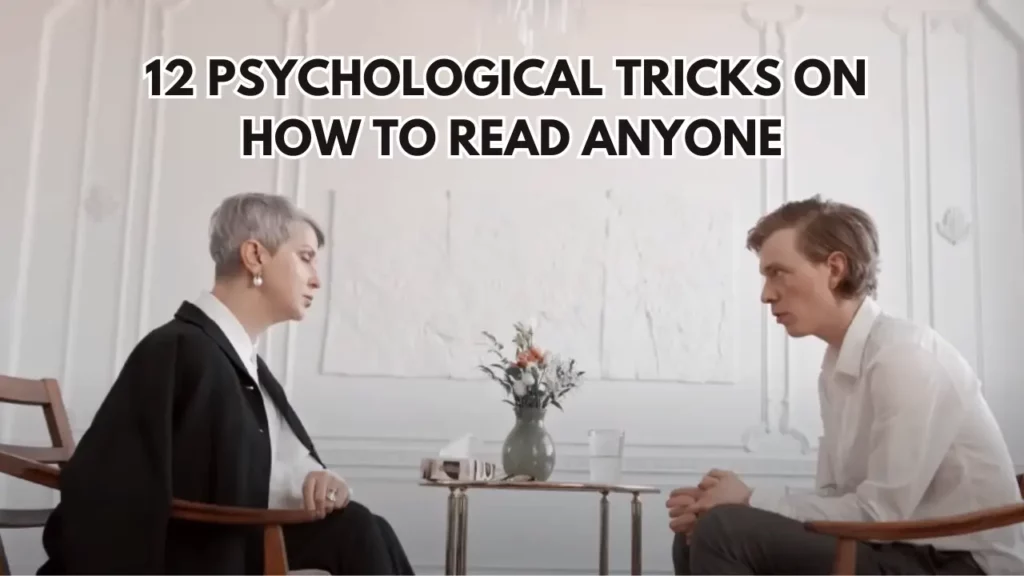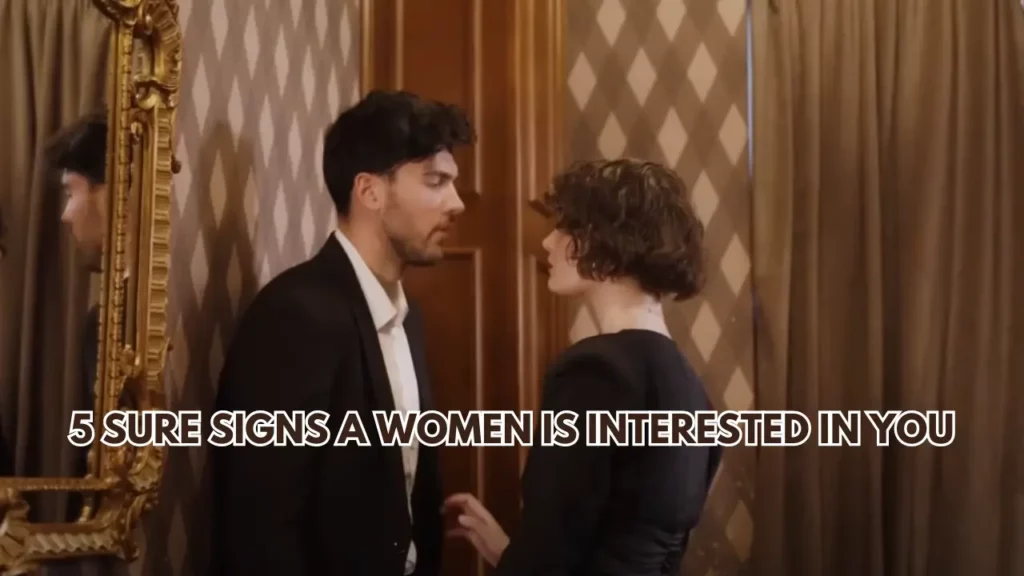How To Read Anyone: 12 Psychological Tips to Unlock the Secrets of Human Interaction with Our 12 Expert Tips on Mastering the Art of Reading People.
Today, we’re diving deep into a fascinating topic: how to read people. Have you ever experienced an intuition about someone that was difficult to put into words? That’s because you were instinctively delving into the art of perceiving people, a skill that can assist you in navigating interactions, avoiding potential pitfalls, and fostering stronger relationships.
In this article, we’ll guide you through 12 insightful tips to help you become adept at interpreting cues, body language, and more. So, if you’re prepared to unravel the complexities of behavior, let’s begin our journey.
1. First Impression
You know what they say: First impressions really matter. It all starts with that handshake, a significant gesture. A strong grip shows confidence, while a weak handshake might indicate shyness or even a lack of self-assurance.
There’s more to it than that; pay attention to whether they maintain eye contact while shaking hands. Avoiding eye contact could suggest disinterest, shyness, or even dishonesty.
Remember, a handshake can shape your perception and set the tone for interactions, so the next time you reach out your hand, keep these insights in mind.
2. Deciphering Arm Crossings
The familiar gesture of crossing one’s arms, a posture that conveys meaning. When someone folds their arms across their chest, it’s not merely about finding comfort; it can actually signify unease with the conversation or even a need to shield oneself.
So, the next time you observe this behavior, bear in mind that appearances can be deceiving. Recognizing the significance of arm crosses enables us to honor boundaries and recognize when it’s appropriate to give space. Ultimately, it boils down to empathy and comprehending where the other person is coming from.
3. Unveiling the Eyes
The eyes are often considered as windows to the soul since they can convey emotions and thoughts that words alone may not capture.
When a person avoids making eye contact, it can indicate various things, ranging from disinterest to shyness. However, it can be challenging to discern the reason.
One way to gain insight is by observing where their gaze wanders. If they frequently look at others or inanimate objects, it may suggest disinterest. Conversely, if they tend to look away, it could be a sign of shyness or nervousness.

4. Cracking the Code of Fidgeting
Have you ever come across someone who just can’t seem to stay still? Whether they’re constantly adjusting their clothes or playing with their hair, fidgeting, even though it’s often misunderstood, can actually provide insights into a person’s emotions.
Contrary to what many believe, fidgeting doesn’t always indicate disinterest. In some cases, it arises from feelings of nervousness or social discomfort.
So, the next time you observe someone fidgeting during a conversation, it could be their way of dealing with uncertainty or discussing a topic that makes them uneasy.
Instead of jumping to conclusions, try practicing patience and take the context into consideration; their fidgeting might be an expression of their thoughts and emotions that they find difficult to articulate.
5. The Dynamics of Personal Space
When you’re having a conversation with someone and they lean in close, it can mean two things: either they feel comfortable with you, or they enjoy the interaction and have a fondness for closeness.
However, this kind of closeness can make some people uneasy as it invades their space. If you move back and they keep getting closer, don’t worry; their intention is harmless.
They simply enjoy your company and being around you. Unfortunately, he or she isn’t paying attention to your non-verbal cues to give you some space.
6. The Walk and the Talk
Believe it or not, the way someone walks can reveal a lot about their world. When someone confidently strides with their head held high, it shows not just posture but also self-assurance and pride.
On the other hand, if someone shuffles with a lowered head, it might suggest shyness, lack of confidence, or even a desire for companionship. However, it’s important to note that confidence doesn’t always mean arrogance.
Engaging in conversations can help you truly understand their demeanor. Understanding someone’s personality through their walk may seem like an art, but it is a skill in understanding people better.
So, as you observe their movements, pay attention to the messages conveyed by their footsteps.
7. The Language of Posture
Like the words we choose, our body language also speaks volumes about our emotions, confidence, and how we see ourselves.
When you come across someone who stands tall with their shoulders and head held high, it’s a sign of their confidence and self-assurance. It’s a way of saying, “I’m present and ready to engage.”
Conversely, if someone slouches with their head down, it may indicate shyness, low self-esteem, or even nervousness. Understanding the cues of body posture enables us to empathize with someone’s state and potentially provide the support they need to open up.
As you develop your ability to read people effectively, remember that even small adjustments in body posture can have an impact on how others perceive you.
8. Unlocking Emotions through Facial Expressions
Through facial expressions, the quicker you grasp the skill of interpreting people’s eyes, the faster you’ll decipher whether they’re experiencing happiness, sadness, discontent, or any other sentiment.
Often referred to as the windows to the soul, a person’s eyes indeed hold profound insights. Establishing eye contact holds significant importance as it allows you to delve into their inner realm.
Are they beaming while conversing, or is their countenance marked by indifference? Do they roll their eyes, arch an eyebrow, or perhaps wear a subtle smirk? Does their forehead crease with annoyance or worry? Vigilantly observe facial expressions, and a plethora of answers will unfold.
Either the individual is genuinely engaged in both you and the conversation, or they find themselves uninterested and detached.
9. The Significance of Timeliness
Now, let’s discuss an overlooked yet revealing aspect of understanding people: their timeliness. When it comes to being punctual, it’s not just about arriving on time; it provides a glimpse into someone’s values and priorities.
A person who consistently runs late may be struggling with managing their time, showing disorganization, or possibly lacking enthusiasm for the commitment.
Conversely, an individual who arrives early demonstrates dedication, respect for obligations, and a strong sense of integrity. By observing how individuals handle time management, you can gain insights beyond tracking the clock.
10. Emotions in Every Word
In every word, we often think of facial expressions as the ultimate emotion indicators. However, studies reveal that a person’s voice can provide even more accurate cues about their feelings.
Quick, clipped speech might signal anxiety, while a slow, monotone voice could denote exhaustion. Keep your ears open for the emotions hidden within the tone, pace, and pitch of their voice.
11. Nodding and Subtext
Paying attention to how someone nods during a conversation can reveal insights into the dynamics at hand. If someone nods frequently when talking to an authority figure or peers, it could indicate respect or perhaps concern about being judged.
By observing nodding patterns, you can uncover layers of meaning within relationships. Remember, there’s more to communication than just words.
12. The Clothes They Wear
Let’s conclude our exploration of understanding people by shifting our focus to something in front of us: the clothes they choose to wear.
As the popular saying suggests, “Clothes make the person.” It’s true that attire can say a lot about someone’s identity. Whether it’s a tailored suit, a relaxed outfit, or an individual style, clothing can subtly reflect aspects of a person’s personality, values, and preferences.
Each choice, from the attention to detail in attire to the comfortable ease of casual clothing, communicates volumes. It’s a silent language that reveals a person’s approach to life, their comfort zones, and even their desire to make an impression.
Remember, it’s not quickly forming opinions, but rather about developing empathy, understanding, and effective communication abilities. By exploring the nuances of body language, facial expressions, and other non-verbal signals, you’re on your way to becoming an expert in understanding people.




